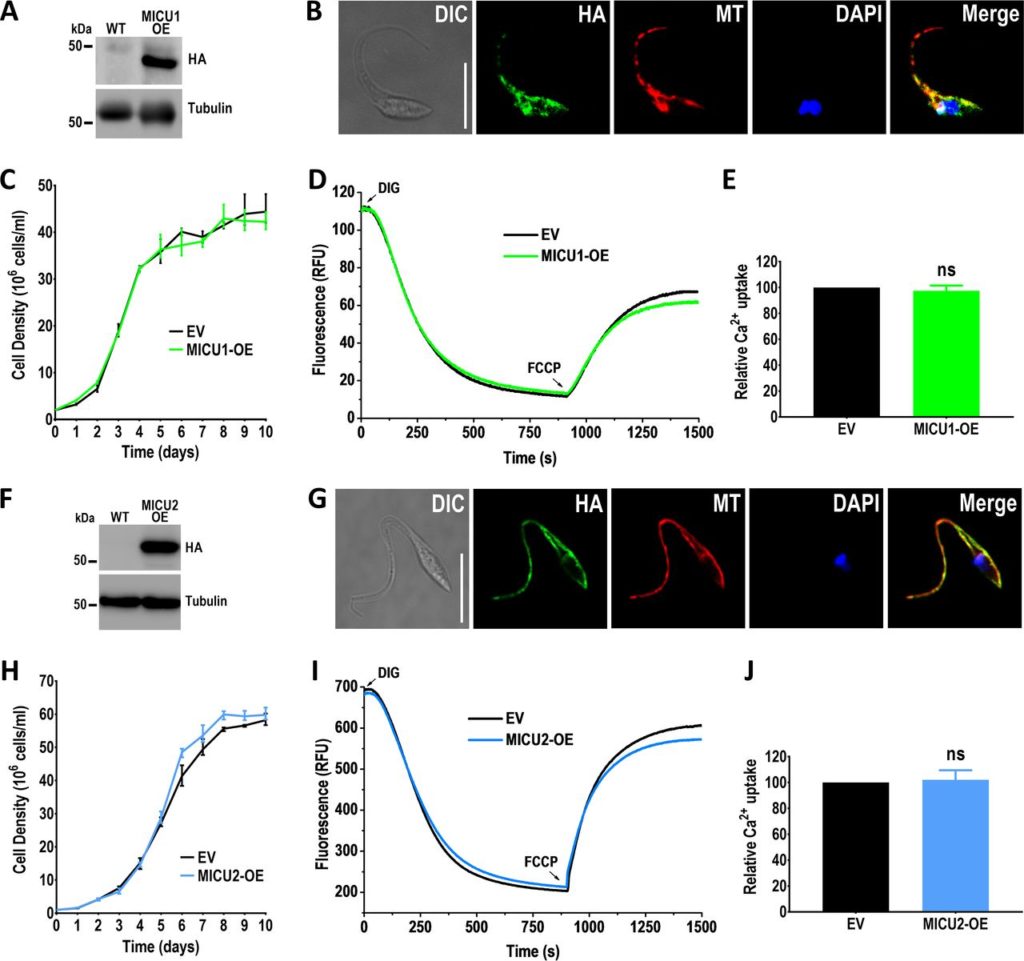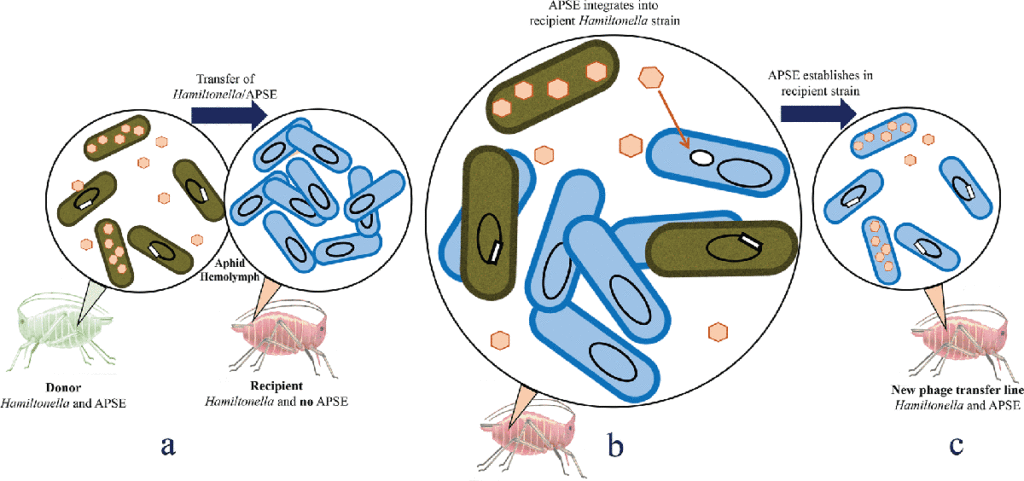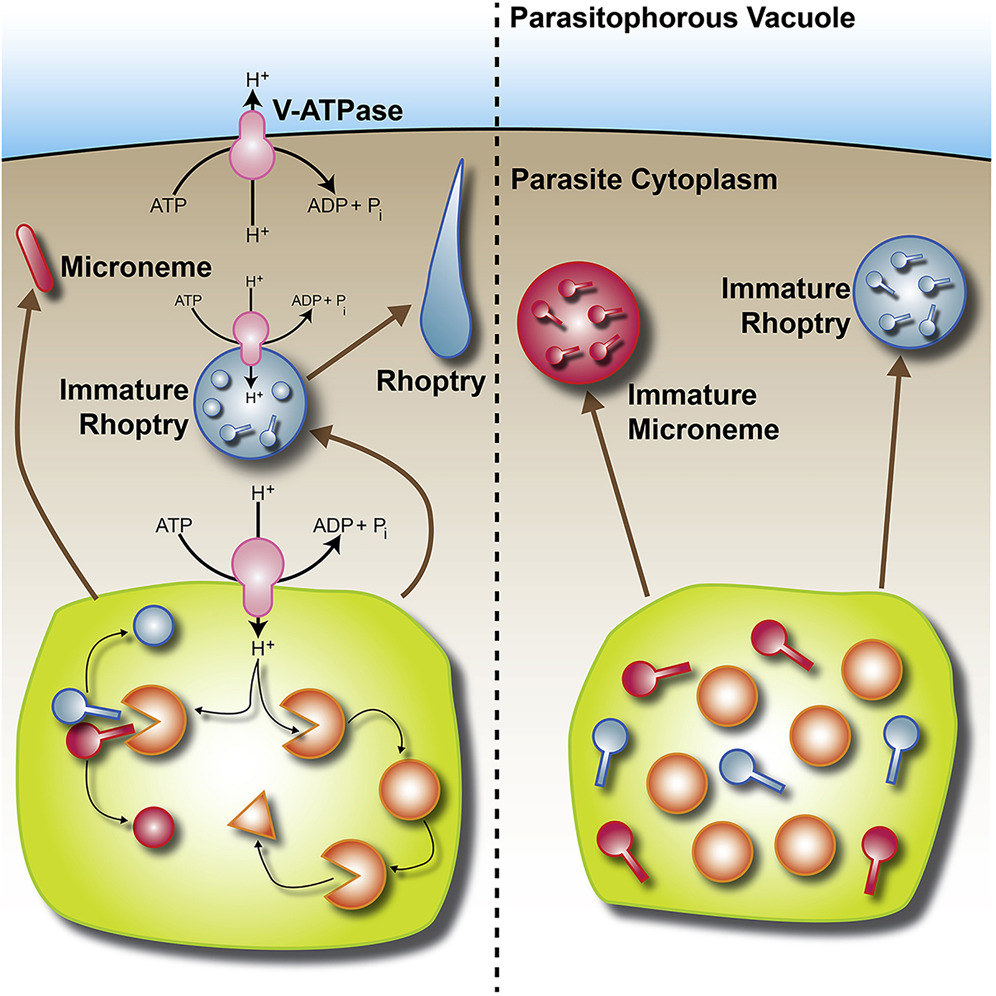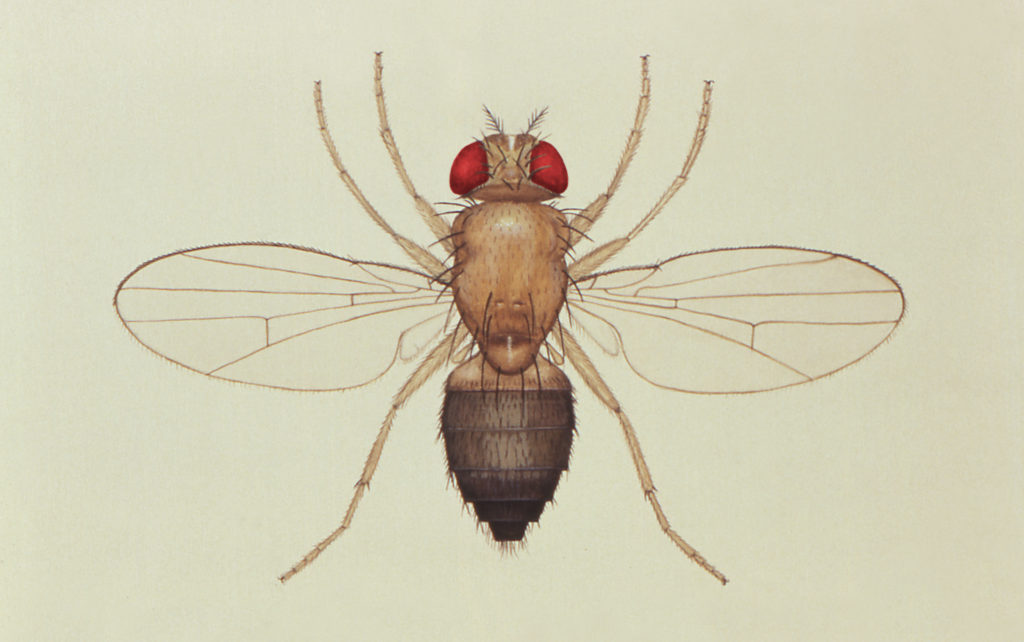 The mitochondrial Ca2+ uptake in trypanosomatids, which belong to the eukaryotic supergroup Excavata, shares biochemical characteristics with that of animals, which, together with fungi, belong to the supergroup Opisthokonta. However, the composition of the mitochondrial calcium uniporter (MCU) complex in trypanosomatids is quite peculiar, suggesting lineage-specific adaptations. In this work, we used Trypanosoma cruzi to study the role of orthologs for mitochondrial calcium uptake 1 (MICU1) and MICU2 in mitochondrial Ca2+ uptake. T. cruzi MICU1 (TcMICU1) and TcMICU2 have mitochondrial targeting signals, two canonical EF-hand calcium-binding domains, and localize to the mitochondria. Using the CRISPR/Cas9 system (i.e., clustered regularly interspaced short palindromic repeats with Cas9), we generated TcMICU1 and TcMICU2 knockout (-KO) cell lines. Ablation of either TcMICU1 or TcMICU2 showed a significantly reduced mitochondrial Ca2+uptake in permeabilized epimastigotes without dissipation of the mitochondrial membrane potential or effects on the AMP/ATP ratio or citrate synthase activity. However, none of these proteins had a gatekeeper function at low cytosolic Ca2+ concentrations ([Ca2+]cyt), as occurs with their mammalian orthologs. TcMICU1-KO and TcMICU2-KO epimastigotes had a lower growth rate and impaired oxidative metabolism, while infective trypomastigotes have a reduced capacity to invade host cells and to replicate within them as amastigotes. The findings of this work, which is the first to study the role of MICU1 and MICU2 in organisms evolutionarily distant from animals, suggest that, although these components were probably present in the last eukaryotic common ancestor (LECA), they developed different roles during evolution of different eukaryotic supergroups. The work also provides new insights into the adaptations of trypanosomatids to their particular life styles.
The mitochondrial Ca2+ uptake in trypanosomatids, which belong to the eukaryotic supergroup Excavata, shares biochemical characteristics with that of animals, which, together with fungi, belong to the supergroup Opisthokonta. However, the composition of the mitochondrial calcium uniporter (MCU) complex in trypanosomatids is quite peculiar, suggesting lineage-specific adaptations. In this work, we used Trypanosoma cruzi to study the role of orthologs for mitochondrial calcium uptake 1 (MICU1) and MICU2 in mitochondrial Ca2+ uptake. T. cruzi MICU1 (TcMICU1) and TcMICU2 have mitochondrial targeting signals, two canonical EF-hand calcium-binding domains, and localize to the mitochondria. Using the CRISPR/Cas9 system (i.e., clustered regularly interspaced short palindromic repeats with Cas9), we generated TcMICU1 and TcMICU2 knockout (-KO) cell lines. Ablation of either TcMICU1 or TcMICU2 showed a significantly reduced mitochondrial Ca2+uptake in permeabilized epimastigotes without dissipation of the mitochondrial membrane potential or effects on the AMP/ATP ratio or citrate synthase activity. However, none of these proteins had a gatekeeper function at low cytosolic Ca2+ concentrations ([Ca2+]cyt), as occurs with their mammalian orthologs. TcMICU1-KO and TcMICU2-KO epimastigotes had a lower growth rate and impaired oxidative metabolism, while infective trypomastigotes have a reduced capacity to invade host cells and to replicate within them as amastigotes. The findings of this work, which is the first to study the role of MICU1 and MICU2 in organisms evolutionarily distant from animals, suggest that, although these components were probably present in the last eukaryotic common ancestor (LECA), they developed different roles during evolution of different eukaryotic supergroups. The work also provides new insights into the adaptations of trypanosomatids to their particular life styles.
IMPORTANCE Trypanosoma cruzi is the etiologic agent of Chagas disease and belongs to the early-branching eukaryotic supergroup Excavata. Its mitochondrial calcium uniporter (MCU) subunit shares similarity with the animal ortholog that was important to discover its encoding gene. In animal cells, the MICU1 and MICU2 proteins act as Ca2+ sensors and gatekeepers of the MCU, preventing Ca2+ uptake under resting conditions and favoring it at high cytosolic Ca2+ concentrations ([Ca2+]cyt). Using the CRISPR/Cas9 technique, we generated TcMICU1 and TcMICU2 knockout cell lines and showed that MICU1 and -2 do not act as gatekeepers at low [Ca2+]cyt but are essential for normal growth, host cell invasion, and intracellular replication, revealing lineage-specific adaptations.
Mayara S. Bertolini, Miguel A. Chiurillo, Noelia Lander, Anibal E. Vercesi, Roberto Docampo. 2019. MBio.; 10(3). pii: e00348-19. doi: 10.1128/mBio.00348-19.
 Insects are frequently infected with inherited facultative symbionts known to provide a range of conditionally beneficial services, including host protection. Pea aphids (Acyrthosiphon pisum) often harbour the bacterium Hamiltonella defensa, which together with its associated bacteriophage A. pisum secondary endosymbiont (APSE) confer protection against an important natural enemy, the parasitic wasp Aphidius ervi. Previous studies showed that spontaneous loss of phage APSE resulted in the complete loss of the protective phenotype. Here, we demonstrate that APSEs can be experimentally transferred into phage-free (i.e. non-protecting) Hamiltonella strains. Unexpectedly, trials using injections of phage particles alone failed, with successful transfer occurring only when APSE and Hamiltonella were simultaneously injected. After transfer, stable establishment of APSE fully restored anti-parasitoid defenses. Thus, phages associated with heritable bacterial symbionts can move horizontally among symbiont strains facilitating the rapid transfer of ecologically important traits although natural barriers may preclude regular exchange.
Insects are frequently infected with inherited facultative symbionts known to provide a range of conditionally beneficial services, including host protection. Pea aphids (Acyrthosiphon pisum) often harbour the bacterium Hamiltonella defensa, which together with its associated bacteriophage A. pisum secondary endosymbiont (APSE) confer protection against an important natural enemy, the parasitic wasp Aphidius ervi. Previous studies showed that spontaneous loss of phage APSE resulted in the complete loss of the protective phenotype. Here, we demonstrate that APSEs can be experimentally transferred into phage-free (i.e. non-protecting) Hamiltonella strains. Unexpectedly, trials using injections of phage particles alone failed, with successful transfer occurring only when APSE and Hamiltonella were simultaneously injected. After transfer, stable establishment of APSE fully restored anti-parasitoid defenses. Thus, phages associated with heritable bacterial symbionts can move horizontally among symbiont strains facilitating the rapid transfer of ecologically important traits although natural barriers may preclude regular exchange.
 Zinc (Zn2+) is the most abundant biological metal ion aside from iron and is an essential element in numerous biological systems, acting as a cofactor for a large number of enzymes and regulatory proteins. Zn2+ must be tightly regulated, as both the deficiency and overabundance of intracellular free Zn2+ are harmful to cells. Zn2+ transporters (ZnTs) play important functions in cells by reducing intracellular Zn2+ levels by transporting the ion out of the cytoplasm. We characterized a
Zinc (Zn2+) is the most abundant biological metal ion aside from iron and is an essential element in numerous biological systems, acting as a cofactor for a large number of enzymes and regulatory proteins. Zn2+ must be tightly regulated, as both the deficiency and overabundance of intracellular free Zn2+ are harmful to cells. Zn2+ transporters (ZnTs) play important functions in cells by reducing intracellular Zn2+ levels by transporting the ion out of the cytoplasm. We characterized a  Anthelmintic resistance is a threat to global food security. In order to alleviate the selection pressure for resistance and maintain drug efficacy, management strategies increasingly aim to preserve a proportion of the parasite population in ‘refugia’, unexposed to treatment. While persuasive in its logic, and widely advocated as best practice, evidence for the ability of refugia-based approaches to slow the development of drug resistance in parasitic helminths is currently limited. Moreover, the conditions needed for refugia to work, or how transferable those are between parasite-host systems, are not known. This review, born of an international workshop, seeks to deconstruct the concept of refugia and examine its assumptions and applicability in different situations. We conclude that factors potentially important to refugia, such as the fitness cost of drug resistance, the degree of mixing between parasite sub-populations selected through treatment or not, and the impact of parasite life-history, genetics and environment on the population dynamics of resistance, vary widely between systems. The success of attempts to generate refugia to limit anthelmintic drug resistance are therefore likely to be highly dependent on the system in hand. Additional research is needed on the concept of refugia and the underlying principles for its application across systems, as well as empirical studies within systems that prove and optimise its usefulness.
Anthelmintic resistance is a threat to global food security. In order to alleviate the selection pressure for resistance and maintain drug efficacy, management strategies increasingly aim to preserve a proportion of the parasite population in ‘refugia’, unexposed to treatment. While persuasive in its logic, and widely advocated as best practice, evidence for the ability of refugia-based approaches to slow the development of drug resistance in parasitic helminths is currently limited. Moreover, the conditions needed for refugia to work, or how transferable those are between parasite-host systems, are not known. This review, born of an international workshop, seeks to deconstruct the concept of refugia and examine its assumptions and applicability in different situations. We conclude that factors potentially important to refugia, such as the fitness cost of drug resistance, the degree of mixing between parasite sub-populations selected through treatment or not, and the impact of parasite life-history, genetics and environment on the population dynamics of resistance, vary widely between systems. The success of attempts to generate refugia to limit anthelmintic drug resistance are therefore likely to be highly dependent on the system in hand. Additional research is needed on the concept of refugia and the underlying principles for its application across systems, as well as empirical studies within systems that prove and optimise its usefulness. Vacuolar-proton ATPases (V-ATPases) are conserved complexes that couple the hydrolysis of ATP to the pumping of protons across membranes. V-ATPases are known to play diverse roles in cellular physiology. We studied the Toxoplasma gondiiV-ATPase complex and discovered a dual role of the pump in protecting parasites against ionic stress and in the maturation of secretory proteins in endosomal-like compartments. Toxoplasma V-ATPase subunits localize to the plasma membrane and to acidic vesicles, and characterization of conditional mutants of the a1 subunit highlighted the functionality of the complex at both locations. Microneme and rhoptry proteins are required for invasion and modulation of host cells, and they traffic via endosome-like compartments in which proteolytic maturation occurs. We show that the V-ATPase supports the maturation of rhoptry and microneme proteins, and their maturases, during their traffic to their corresponding organelles. This work underscores a role for V-ATPases in regulating virulence pathways.
Vacuolar-proton ATPases (V-ATPases) are conserved complexes that couple the hydrolysis of ATP to the pumping of protons across membranes. V-ATPases are known to play diverse roles in cellular physiology. We studied the Toxoplasma gondiiV-ATPase complex and discovered a dual role of the pump in protecting parasites against ionic stress and in the maturation of secretory proteins in endosomal-like compartments. Toxoplasma V-ATPase subunits localize to the plasma membrane and to acidic vesicles, and characterization of conditional mutants of the a1 subunit highlighted the functionality of the complex at both locations. Microneme and rhoptry proteins are required for invasion and modulation of host cells, and they traffic via endosome-like compartments in which proteolytic maturation occurs. We show that the V-ATPase supports the maturation of rhoptry and microneme proteins, and their maturases, during their traffic to their corresponding organelles. This work underscores a role for V-ATPases in regulating virulence pathways. The vast majority of malaria mortality is attributed to one parasite species: Plasmodium falciparum. Asexual replication of the parasite within the red blood cell is responsible for the pathology of the disease. In Plasmodium, the endoplasmic reticulum (ER) is a central hub for protein folding and trafficking as well as stress response pathways. In this study, we tested the role of an uncharacterized ER protein, PfGRP170, in regulating these key functions by generating conditional mutants. Our data show that PfGRP170 localizes to the ER and is essential for asexual growth, specifically required for proper development of schizonts. PfGRP170 is essential for surviving heat shock, suggesting a critical role in cellular stress response. The data demonstrate that PfGRP170 interacts with the Plasmodium orthologue of the ER chaperone, BiP. Finally, we found that loss of PfGRP170 function leads to the activation of the Plasmodium eIF2α kinase, PK4, suggesting a specific role for this protein in this parasite stress response pathway.
The vast majority of malaria mortality is attributed to one parasite species: Plasmodium falciparum. Asexual replication of the parasite within the red blood cell is responsible for the pathology of the disease. In Plasmodium, the endoplasmic reticulum (ER) is a central hub for protein folding and trafficking as well as stress response pathways. In this study, we tested the role of an uncharacterized ER protein, PfGRP170, in regulating these key functions by generating conditional mutants. Our data show that PfGRP170 localizes to the ER and is essential for asexual growth, specifically required for proper development of schizonts. PfGRP170 is essential for surviving heat shock, suggesting a critical role in cellular stress response. The data demonstrate that PfGRP170 interacts with the Plasmodium orthologue of the ER chaperone, BiP. Finally, we found that loss of PfGRP170 function leads to the activation of the Plasmodium eIF2α kinase, PK4, suggesting a specific role for this protein in this parasite stress response pathway.
 The mitochondrial Ca2+ uptake in trypanosomatids, which belong to the eukaryotic supergroup Excavata, shares biochemical characteristics with that of animals, which, together with fungi, belong to the supergroup Opisthokonta. However, the composition of the mitochondrial calcium uniporter (MCU) complex in trypanosomatids is quite peculiar, suggesting lineage-specific adaptations. In this work, we used Trypanosoma cruzi to study the role of orthologs for mitochondrial calcium uptake 1 (MICU1) and MICU2 in mitochondrial Ca2+ uptake. T. cruzi MICU1 (TcMICU1) and TcMICU2 have mitochondrial targeting signals, two canonical EF-hand calcium-binding domains, and localize to the mitochondria. Using the CRISPR/Cas9 system (i.e., clustered regularly interspaced short palindromic repeats with Cas9), we generated TcMICU1 and TcMICU2 knockout (-KO) cell lines. Ablation of either TcMICU1 or TcMICU2 showed a significantly reduced mitochondrial Ca2+uptake in permeabilized epimastigotes without dissipation of the mitochondrial membrane potential or effects on the AMP/ATP ratio or citrate synthase activity. However, none of these proteins had a gatekeeper function at low cytosolic Ca2+ concentrations ([Ca2+]cyt), as occurs with their mammalian orthologs. TcMICU1-KO and TcMICU2-KO epimastigotes had a lower growth rate and impaired oxidative metabolism, while infective trypomastigotes have a reduced capacity to invade host cells and to replicate within them as amastigotes. The findings of this work, which is the first to study the role of MICU1 and MICU2 in organisms evolutionarily distant from animals, suggest that, although these components were probably present in the last eukaryotic common ancestor (LECA), they developed different roles during evolution of different eukaryotic supergroups. The work also provides new insights into the adaptations of trypanosomatids to their particular life styles.
The mitochondrial Ca2+ uptake in trypanosomatids, which belong to the eukaryotic supergroup Excavata, shares biochemical characteristics with that of animals, which, together with fungi, belong to the supergroup Opisthokonta. However, the composition of the mitochondrial calcium uniporter (MCU) complex in trypanosomatids is quite peculiar, suggesting lineage-specific adaptations. In this work, we used Trypanosoma cruzi to study the role of orthologs for mitochondrial calcium uptake 1 (MICU1) and MICU2 in mitochondrial Ca2+ uptake. T. cruzi MICU1 (TcMICU1) and TcMICU2 have mitochondrial targeting signals, two canonical EF-hand calcium-binding domains, and localize to the mitochondria. Using the CRISPR/Cas9 system (i.e., clustered regularly interspaced short palindromic repeats with Cas9), we generated TcMICU1 and TcMICU2 knockout (-KO) cell lines. Ablation of either TcMICU1 or TcMICU2 showed a significantly reduced mitochondrial Ca2+uptake in permeabilized epimastigotes without dissipation of the mitochondrial membrane potential or effects on the AMP/ATP ratio or citrate synthase activity. However, none of these proteins had a gatekeeper function at low cytosolic Ca2+ concentrations ([Ca2+]cyt), as occurs with their mammalian orthologs. TcMICU1-KO and TcMICU2-KO epimastigotes had a lower growth rate and impaired oxidative metabolism, while infective trypomastigotes have a reduced capacity to invade host cells and to replicate within them as amastigotes. The findings of this work, which is the first to study the role of MICU1 and MICU2 in organisms evolutionarily distant from animals, suggest that, although these components were probably present in the last eukaryotic common ancestor (LECA), they developed different roles during evolution of different eukaryotic supergroups. The work also provides new insights into the adaptations of trypanosomatids to their particular life styles.